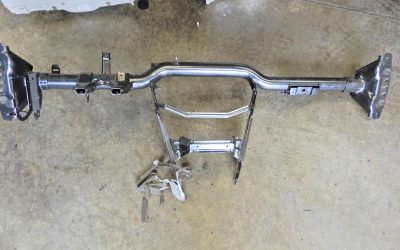No matter what vehicle system we technicians tangle with today when servicing Volvo vehicles, we can be sure that electrical circuits, electronic controls and communications networks will be an integral part of whatever it is we are trying to solve.
Even during maintenance and light repair operations, we often need to reset, relearn, recode or reprogram components or modules. It is a tangled-up world of ones and zeros we live in. The advances in technology, multiple chip modules, stacked systems, gateways, and advancements in line coding, network language (protocols) as well as the sheer depth of complexity built into these vehicles is sometimes overwhelming.
And then, there’s ADAS systems, Radar Adaptive Cruise Control, X-By-Wire controls, hybrid and EV vehicle systems… wow, it is an incredible handful for the modern automotive technician to study, read, internalize and apply all of these variant technologies in order to be a productive, effective and profitable diagnostician.
These days, finding high-level diagnostic technicians can be a real challenge, as most well-studied technicians with 20,000 plus hours of practicing diagnostics are getting older, while newer generation technicians teach us old dogs a few new tricks regarding the more recent programming and “I.T.†side of the automotive repair sphere.
We get calls daily from shops stuck on a vehicle that they, quite frankly, had no business working on; let me carefully qualify that statement, lest I raise the ire of shops that try hard to do it right.
Many of our calls involve driveability complaints or electrical/electronics issues that were actually induced by the repair facility itself. The vehicle came in for a timing problem, for example. Or maybe an electrical issue with the Start button, immobilizer or keyless entry system…
The trouble comes when the shop’s team decided to try to diagnose or repair the vehicle without the required special tools; in the case of the engine timing problem, this would be the camshaft and crankshaft lock tool sets, holding jigs etc. In the case of the electrical issue with the Start button, maybe we have been banging our heads against the wall with a keyless entry fob and Immobilizer system, but we do not have the proper RF signal testers, or a lab scope required to “see†and verify the function or presence of those critical signals.
This was a big issue last week for a technician working on a XC90. He had no way to see if the RF signals were working, so parts cannon diagnostics were applied. Yikes.
The big miss, however, the critical one that costs the consumer many dollars and provides the service advisor and shop owners lots of expensive headaches, is the dreaded “parts cannon†diagnostic procedure. This is where a serious lack of actual physical testing may take place, as the desperation, guesswork and panic ensue during a diagnosis on a multi-module networked vehicle doing weird things, especially when the right diagnostic equipment and information systems are not available at the shop.
You see, when it all comes down to brass tacks, we techs do not really work on electronics at all, we work in the analog electrical realm. The electronics, per se, happen inside the modules, not outside the box, so to speak. Most everything we do in our diagnostic work comes down to basic electrical testing of voltage potential, voltage drops, currents, and resistances in (wired) analog electrical circuits.
This basic practice is where most technicians of any era fall short, once the technology of the vehicle system(s) we are chasing takes over to create a condition we call “out-teching†ourselves. Meaning, we get so wrapped up in the hi-tech operational theory, the unknowns, in the form of the electronics and software coding, the data networks carrying requests from one system module to another… these distractions can really trip up even the most astute diagnostic technician.
What this rapid-fire look at problematic cases day over day has taught our support team, is that basic, and yes, even some advanced physical testing, is almost always the answer and was almost always what was missed or wasn’t done, or it wasn’t done thoroughly or correctly before the call was made on
a parts replacement.
This is true in so many of our cases; we just wanted to identify the simple lack of physical testing as the cause of misdiagnosis in an overwhelming majority of current day diagnostic disasters.
How do we address this as an industry?
First, realize that all modulized computers, networks, and electronic systems require good clean power and ground sources. Without all the powers and grounds verified, including circuit 15 (key-on) and wakeup circuits as well as grounds must be tested and verified, (preferably by the voltage drop method, while the circuit or network is connected and working), prior to replacing a module. I’d bet that over 60 percent of our “really tough†diagnostic hotline cases where a module was replaced needlessly was a lack of basic power and ground testing.
Second, realize that technicians without suitable diagnostic equipment, programming equipment (or resource) and information systems are lost from the start. The days of scan tool-only testing and diagnostics are over. When all of the scanner and software magic fails, the lab scope, transducers, an RF tester and a good information system, maybe even with the help of a good diagnostic support hotline, will always get the job done.
And lastly, as easy as it is for all of us to get out-teched these days, stay humble, go back to understanding and perfecting your basic electrical testing methods. You can even go back and study, with a more advanced outlook, the principles and fundamentals of electricity and apply this to your testing of analog voltage, current, and resistance.
You are just guessing, without physical testing.








0 Comments